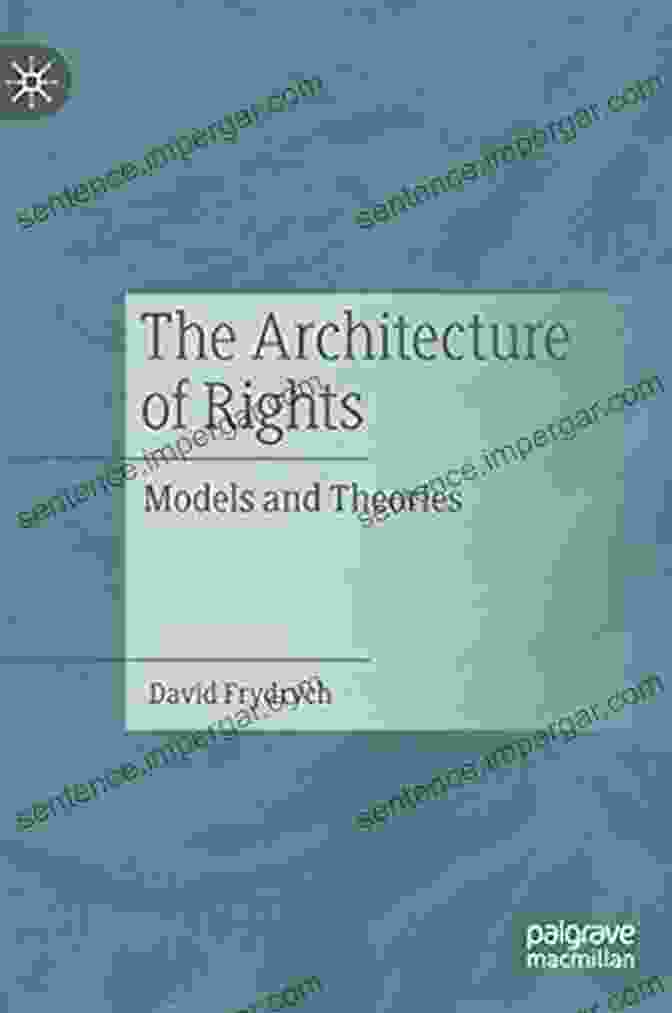The Architecture of Rights: Models and Theories


5 out of 5
| Language | : | English |
| File size | : | 1933 KB |
| Text-to-Speech | : | Enabled |
| Screen Reader | : | Supported |
| Enhanced typesetting | : | Enabled |
| Word Wise | : | Enabled |
| Print length | : | 482 pages |
The concept of rights is a complex and multifaceted one that has been debated by philosophers, legal scholars, and political scientists for centuries. There is no single definition of rights that is universally agreed upon, but most definitions share some common elements. Rights are generally understood to be claims or entitlements that individuals or groups have against others or against society as a whole. They are often seen as essential for protecting individual autonomy and dignity, and for ensuring social justice and equality.
The architecture of rights refers to the way in which rights are structured and organized. There are a number of different models and theories of rights that have been proposed, each with its own unique strengths and weaknesses. In this article, we will explore some of the most common models and theories of rights, and discuss their implications for understanding and protecting human rights.
Models of Rights
There are two main types of models of rights: natural rights and positive rights.
Natural rights are rights that are believed to be inherent in human beings simply by virtue of their humanity. They are not created or granted by any government or other authority, but rather exist independently of human will or convention. Natural rights are often said to be universal, inalienable, and imprescriptible. Universal means that they apply to all human beings, regardless of their nationality, race, gender, or other characteristics. Inalienable means that they cannot be taken away or transferred. Imprescriptible means that they cannot be lost through disuse or neglect.
Positive rights, on the other hand, are rights that are created and enforced by governments or other authorities. They are not inherent in human beings, but rather are granted to them by law. Positive rights can vary from one jurisdiction to another, and they can be changed or repealed at any time. Examples of positive rights include the right to vote, the right to a fair trial, and the right to education.
Theories of Rights
There are a number of different theories of rights that have been proposed. Some of the most common theories include:
- The natural law theory holds that rights are based on universal moral principles that are discoverable through reason. These principles are believed to be binding on all human beings, regardless of their culture or religion. Natural law theorists argue that rights are inherent in human nature and that they cannot be taken away or denied by any government or other authority.
- The social contract theory holds that rights are created through a social contract between individuals. In this theory, individuals agree to give up some of their natural freedoms in Free Download to gain the benefits of living in a society. Rights are seen as a way of protecting individuals from the arbitrary power of the state.
- The utilitarian theory holds that rights are justified if they promote the greatest happiness for the greatest number of people. Utilitarians argue that rights should be balanced against other social goods, such as economic efficiency or social Free Download. They believe that rights can be limited or denied if they are necessary to achieve a greater good.
- The libertarian theory holds that rights are absolute and inviolable. Libertarians argue that individuals have the right to do whatever they want with their own bodies and property, as long as they do not harm others. They believe that rights should not be limited or denied for any reason.
Implications for Understanding and Protecting Human Rights
The architecture of rights has a significant impact on the way that we understand and protect human rights. The different models and theories of rights provide different frameworks for thinking about the nature and scope of rights, and they have different implications for how rights should be protected.
For example, the natural law theory of rights suggests that rights are universal and inalienable, and that they cannot be taken away or denied by any government or other authority. This theory provides a strong foundation for protecting human rights, as it establishes a clear moral basis for rights that is independent of the will of any particular government.
The social contract theory of rights, on the other hand, suggests that rights are created through a social contract between individuals. This theory provides a more flexible framework for protecting human rights, as it allows for rights to be limited or denied in certain circumstances. However, it also raises the question of who has the authority to create and enforce a social contract, and how to ensure that the contract is fair and just.
The utilitarian theory of rights suggests that rights are justified if they promote the greatest happiness for the greatest number of people. This theory provides a more pragmatic framework for protecting human rights, as it allows for rights to be balanced against other social goods. However, it also raises the question of how to measure happiness and how to ensure that the benefits of rights are fairly distributed.
The libertarian theory of rights suggests that rights are absolute and inviolable. This theory provides the strongest protection for individual rights, but it also raises the question of how to balance individual rights with the needs of society as a whole.
The architecture of rights is a complex and multifaceted concept. There are a number of different models and theories of rights that have been proposed, each with its own unique strengths and weaknesses. The different models and theories of rights have different implications for understanding and protecting human rights. It is important to be aware of the different models and theories of rights in Free Download to critically evaluate the arguments for and against different approaches to protecting human rights.
5 out of 5
| Language | : | English |
| File size | : | 1933 KB |
| Text-to-Speech | : | Enabled |
| Screen Reader | : | Supported |
| Enhanced typesetting | : | Enabled |
| Word Wise | : | Enabled |
| Print length | : | 482 pages |
Do you want to contribute by writing guest posts on this blog?
Please contact us and send us a resume of previous articles that you have written.
 Book
Book Novel
Novel Page
Page Chapter
Chapter Text
Text Story
Story Genre
Genre Reader
Reader Library
Library Paperback
Paperback E-book
E-book Magazine
Magazine Newspaper
Newspaper Paragraph
Paragraph Sentence
Sentence Bookmark
Bookmark Shelf
Shelf Glossary
Glossary Bibliography
Bibliography Foreword
Foreword Preface
Preface Synopsis
Synopsis Annotation
Annotation Footnote
Footnote Manuscript
Manuscript Scroll
Scroll Codex
Codex Tome
Tome Bestseller
Bestseller Classics
Classics Library card
Library card Narrative
Narrative Biography
Biography Autobiography
Autobiography Memoir
Memoir Reference
Reference Encyclopedia
Encyclopedia Janice Harper
Janice Harper James Hasik
James Hasik Jd Chandler
Jd Chandler Jeff Broadwater
Jeff Broadwater James Tooley
James Tooley Janis Birkeland
Janis Birkeland Jamie S Dreyer
Jamie S Dreyer Janice M Roper
Janice M Roper James B Stockdale
James B Stockdale James M Ryan
James M Ryan Jasper Burns
Jasper Burns James J Sheehan
James J Sheehan James Moore
James Moore Jason Cusick
Jason Cusick Jason Timothy
Jason Timothy Jason Middleton
Jason Middleton Jeff Ashton
Jeff Ashton Jay Cameron
Jay Cameron James L Hallenbeck
James L Hallenbeck Jeff Foxworthy
Jeff Foxworthy
Light bulbAdvertise smarter! Our strategic ad space ensures maximum exposure. Reserve your spot today!

 Ismael HayesNon Covalent Interactions In Quantum Chemistry And Physics: A Comprehensive...
Ismael HayesNon Covalent Interactions In Quantum Chemistry And Physics: A Comprehensive...
 Fernando BellSpecial Edition Two End The Cycle Of Anxiety And Panic Attacks From Stealing
Fernando BellSpecial Edition Two End The Cycle Of Anxiety And Panic Attacks From Stealing Isaac BellFollow ·4.6k
Isaac BellFollow ·4.6k E.E. CummingsFollow ·16.7k
E.E. CummingsFollow ·16.7k Jerry WardFollow ·13.3k
Jerry WardFollow ·13.3k Ethan GrayFollow ·4.2k
Ethan GrayFollow ·4.2k Wade CoxFollow ·19k
Wade CoxFollow ·19k Ike BellFollow ·15.2k
Ike BellFollow ·15.2k Herb SimmonsFollow ·13.2k
Herb SimmonsFollow ·13.2k Eli BrooksFollow ·5.9k
Eli BrooksFollow ·5.9k

 Jacob Foster
Jacob FosterPrinciples and Persons: The Legacy of Derek Parfit
Derek Parfit's 1984 book,...

 Leo Mitchell
Leo MitchellPartners For Life: Raise Support For Your Missionary Work...
Are you a missionary or ministry leader...

 Blake Kennedy
Blake KennedyOn Desperate Ground: A Gripping Account of World War II's...
Hampton Sides' "On...

 Duane Kelly
Duane KellyCriminal Minds Sociopaths Serial Killers And Other...
In the realm of criminology,...

 Craig Blair
Craig BlairHome Repair: The Ultimate Guide to Fix, Maintain, and...
Welcome to the...

 Elmer Powell
Elmer PowellThe Organic Grower Guide to Mycorrhizae Science for...
Unlock the Secrets of Soil...
5 out of 5
| Language | : | English |
| File size | : | 1933 KB |
| Text-to-Speech | : | Enabled |
| Screen Reader | : | Supported |
| Enhanced typesetting | : | Enabled |
| Word Wise | : | Enabled |
| Print length | : | 482 pages |








